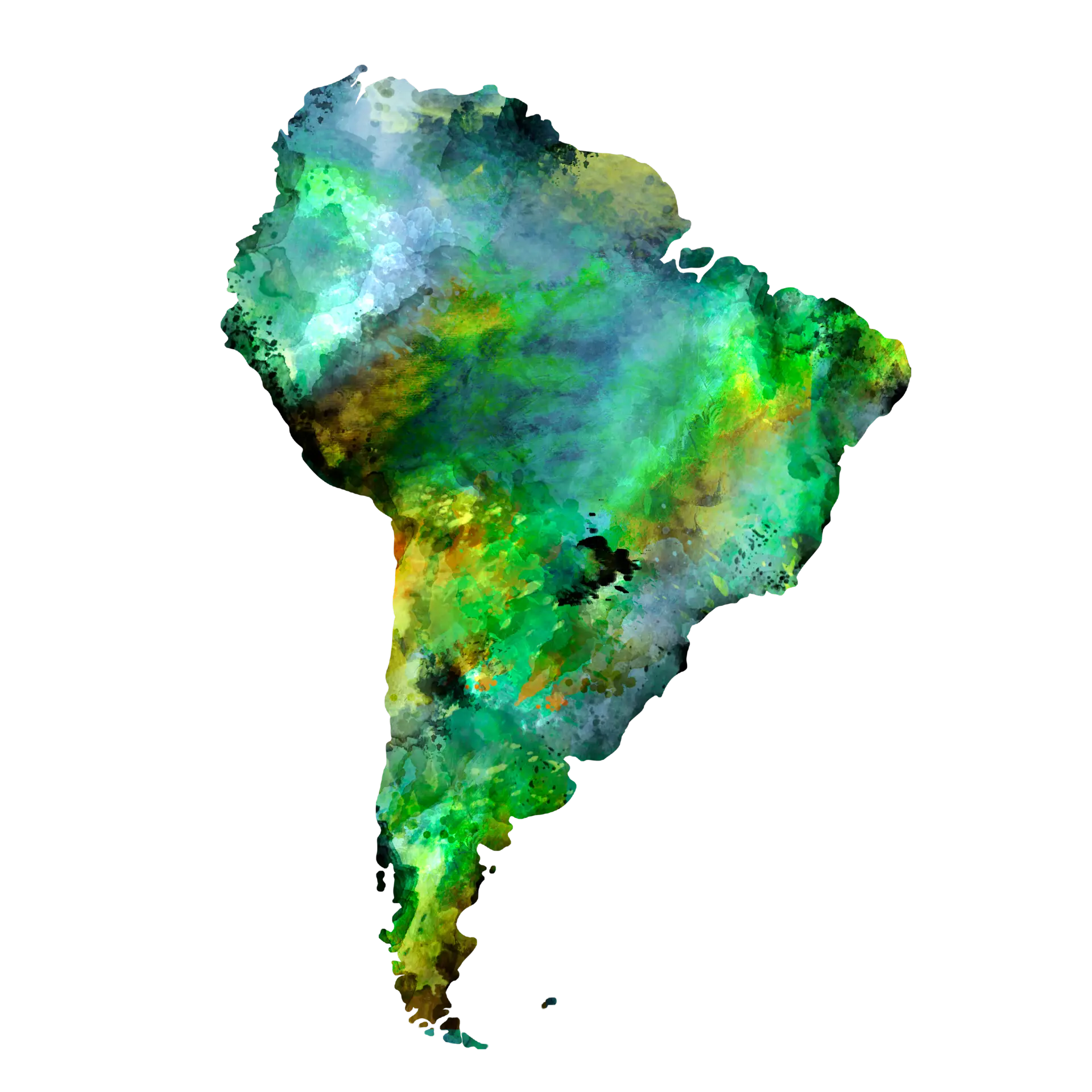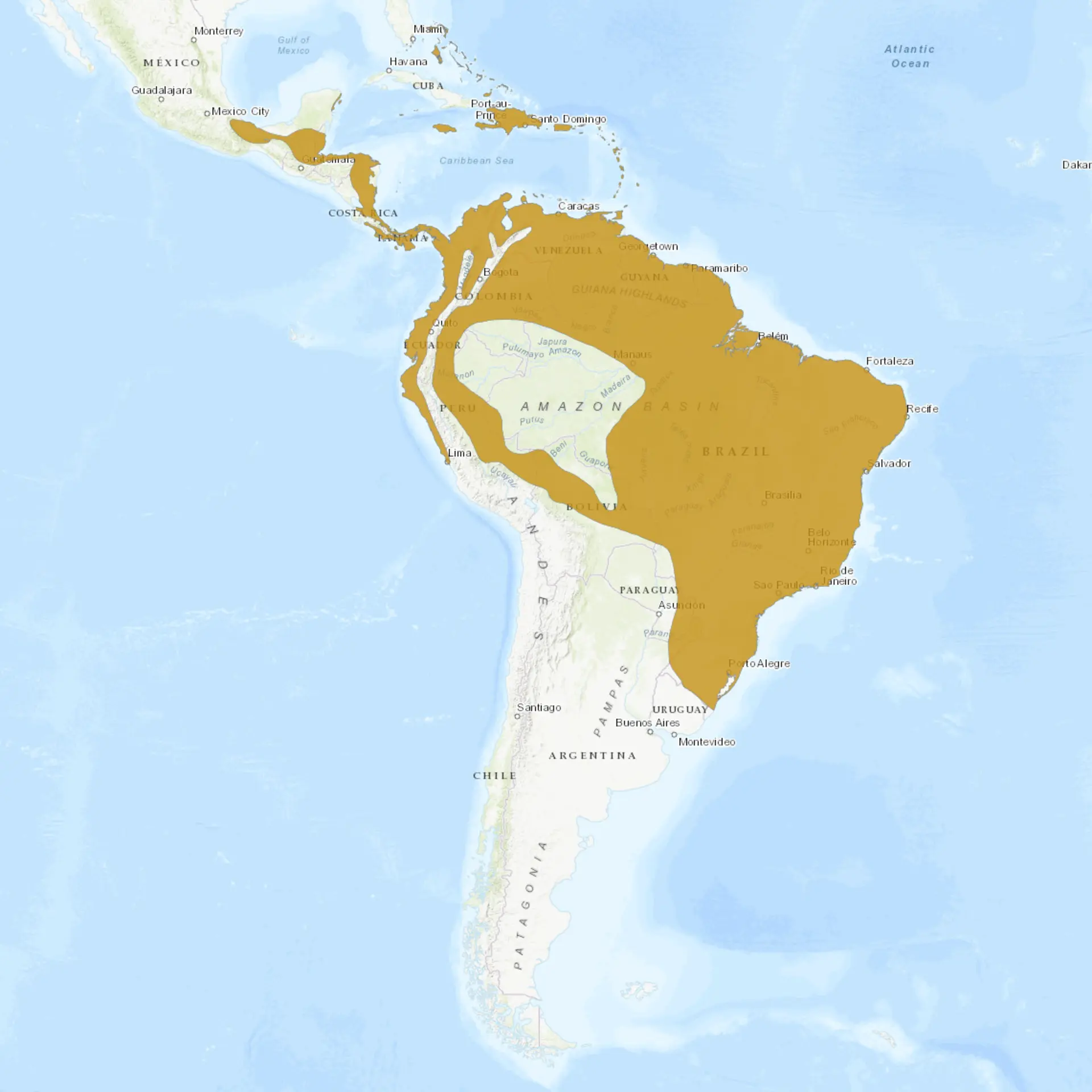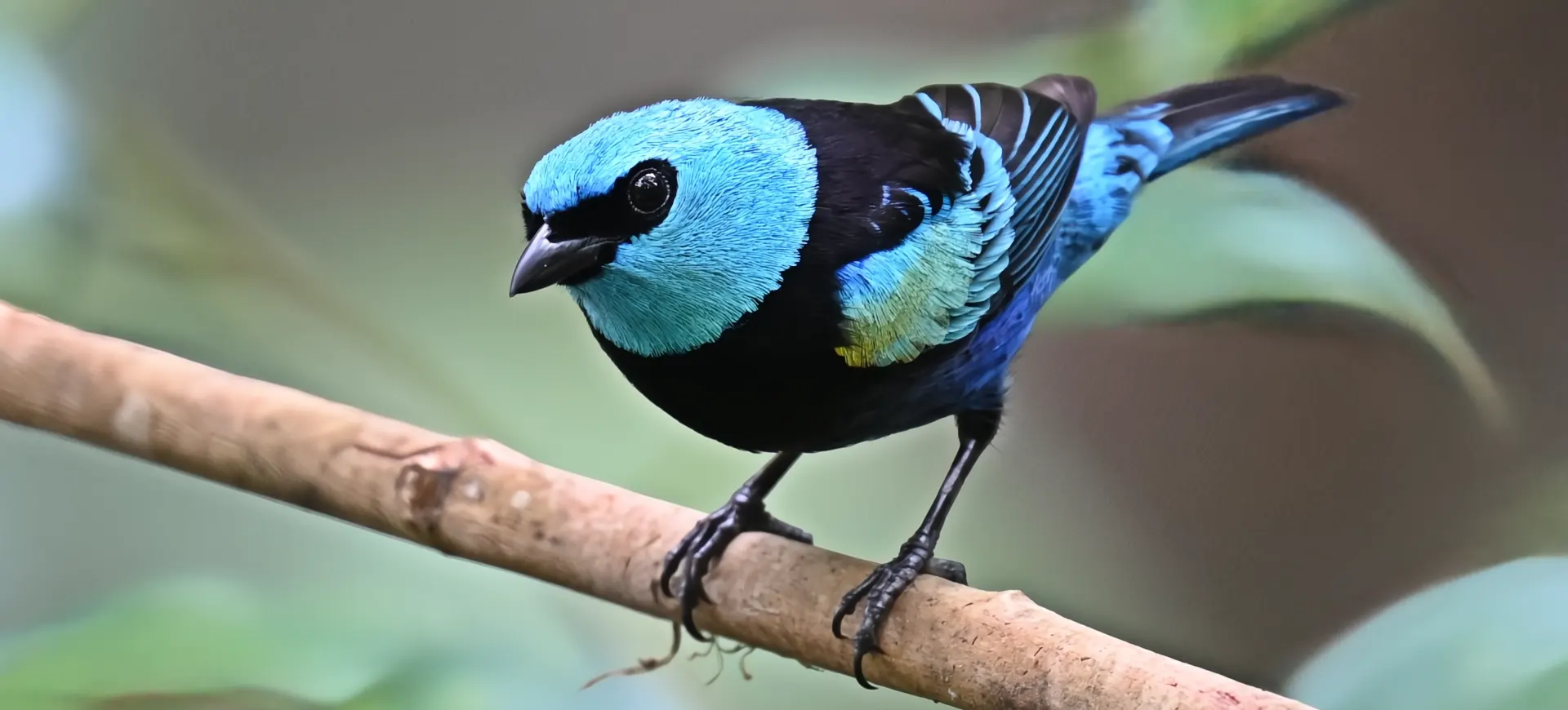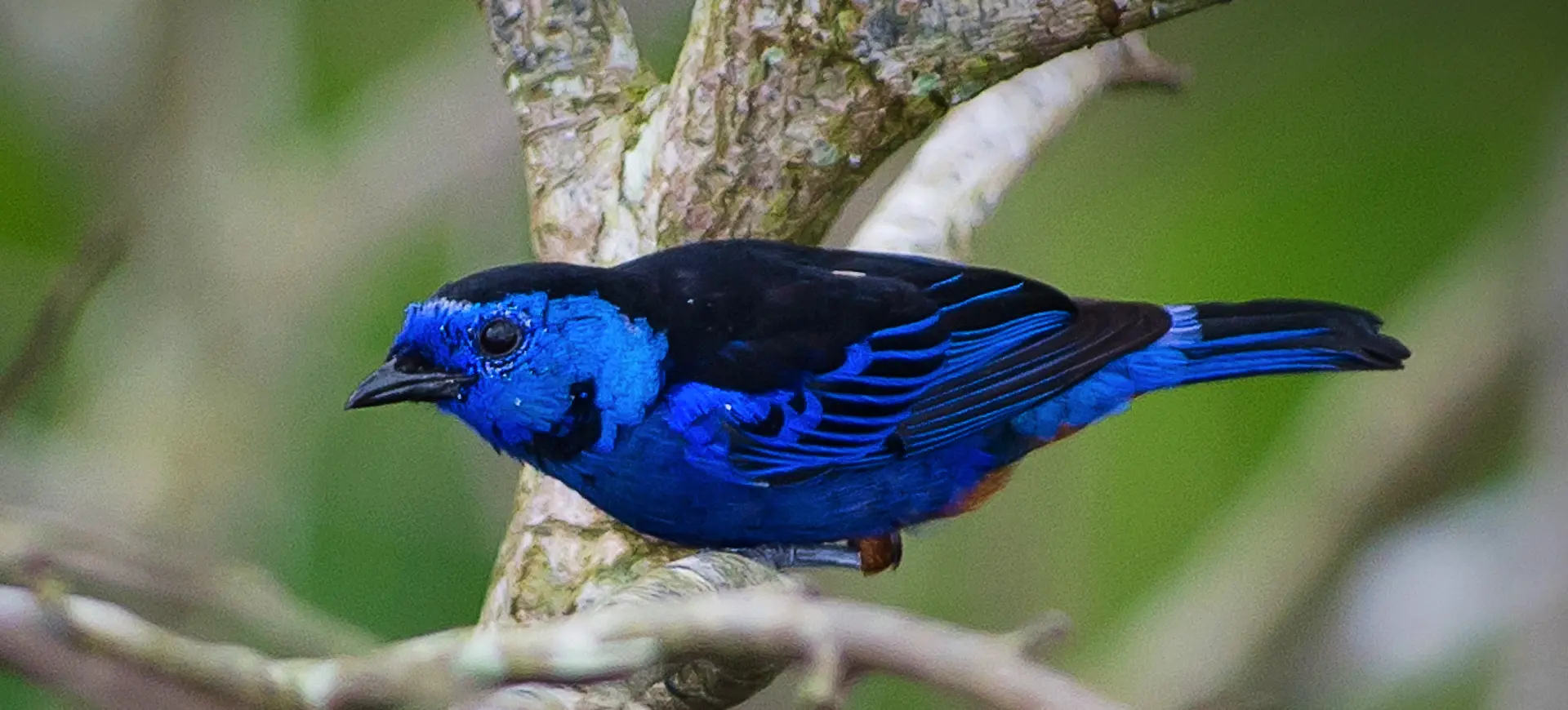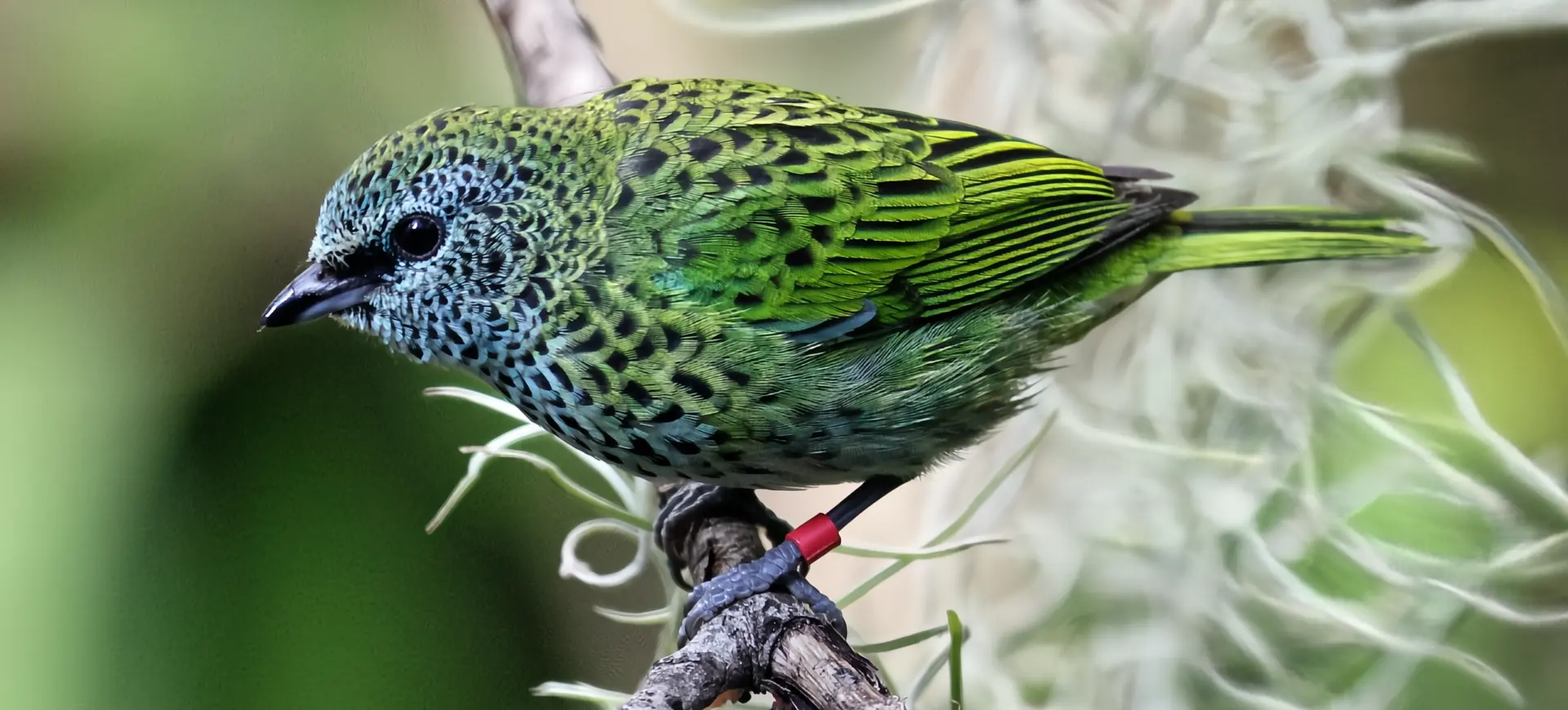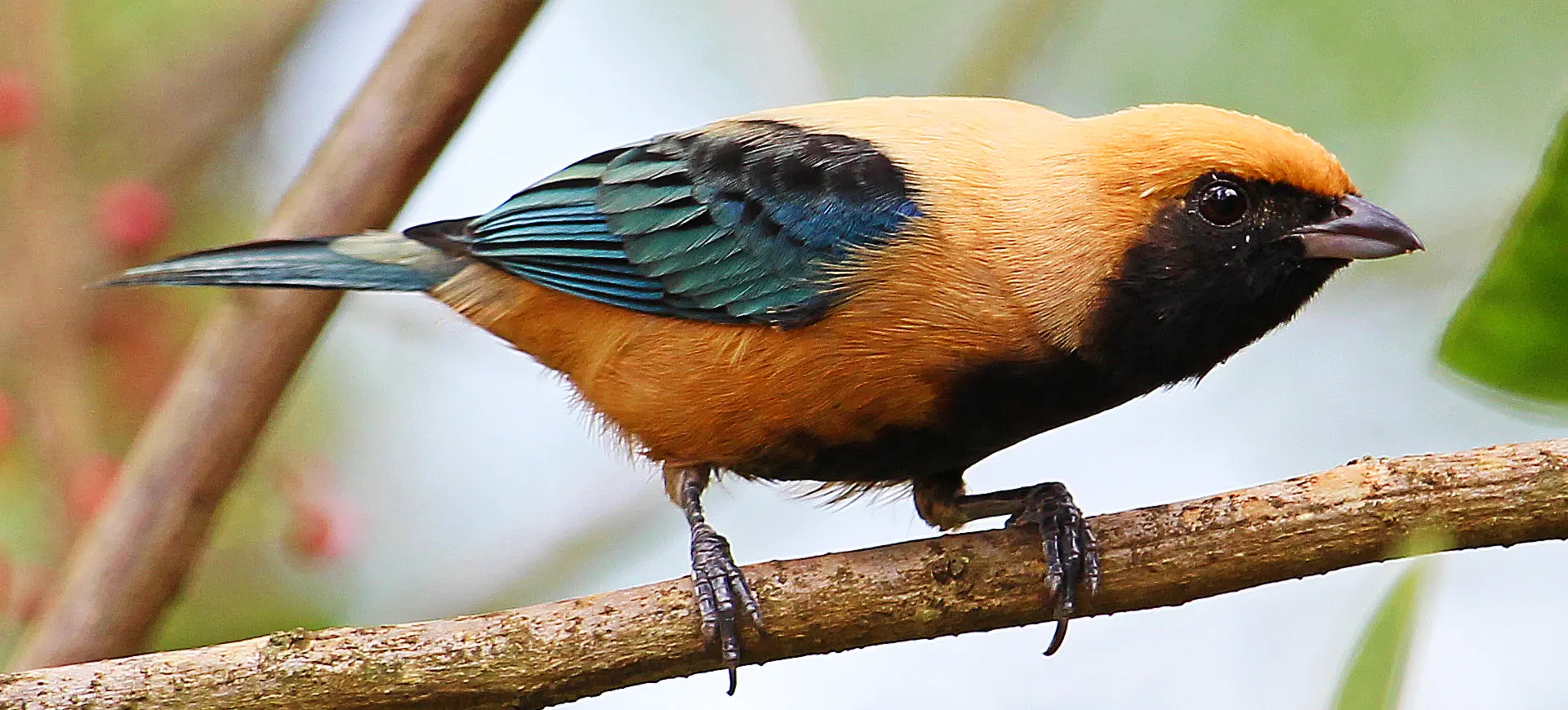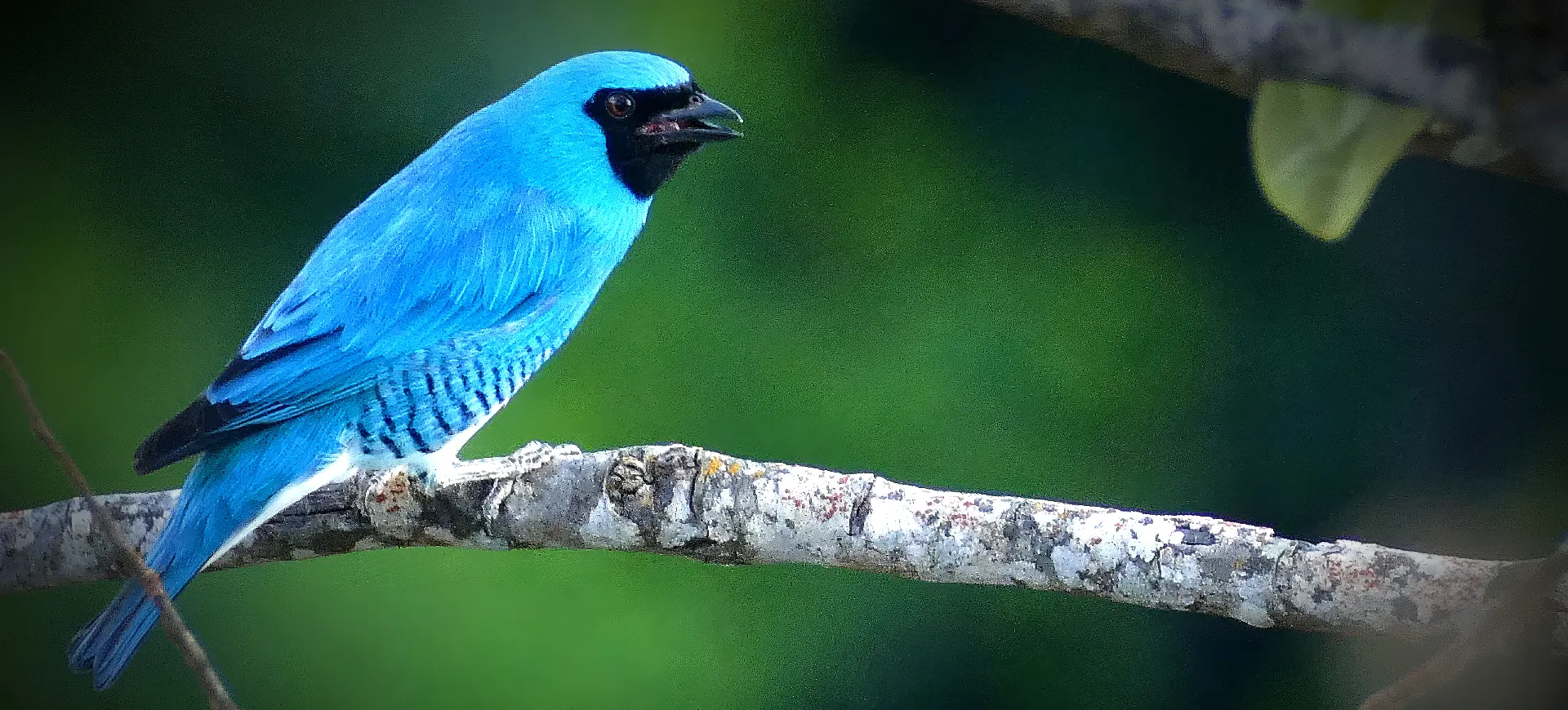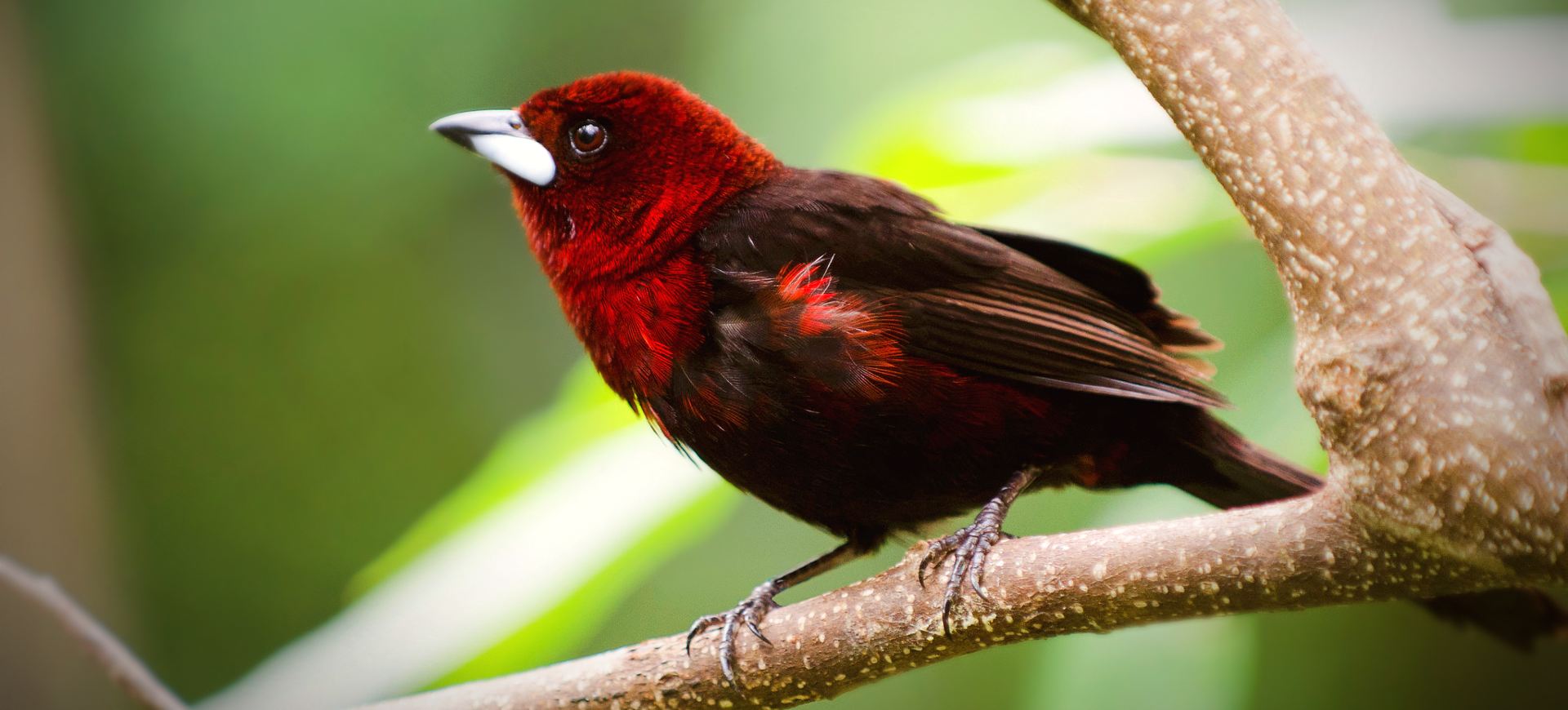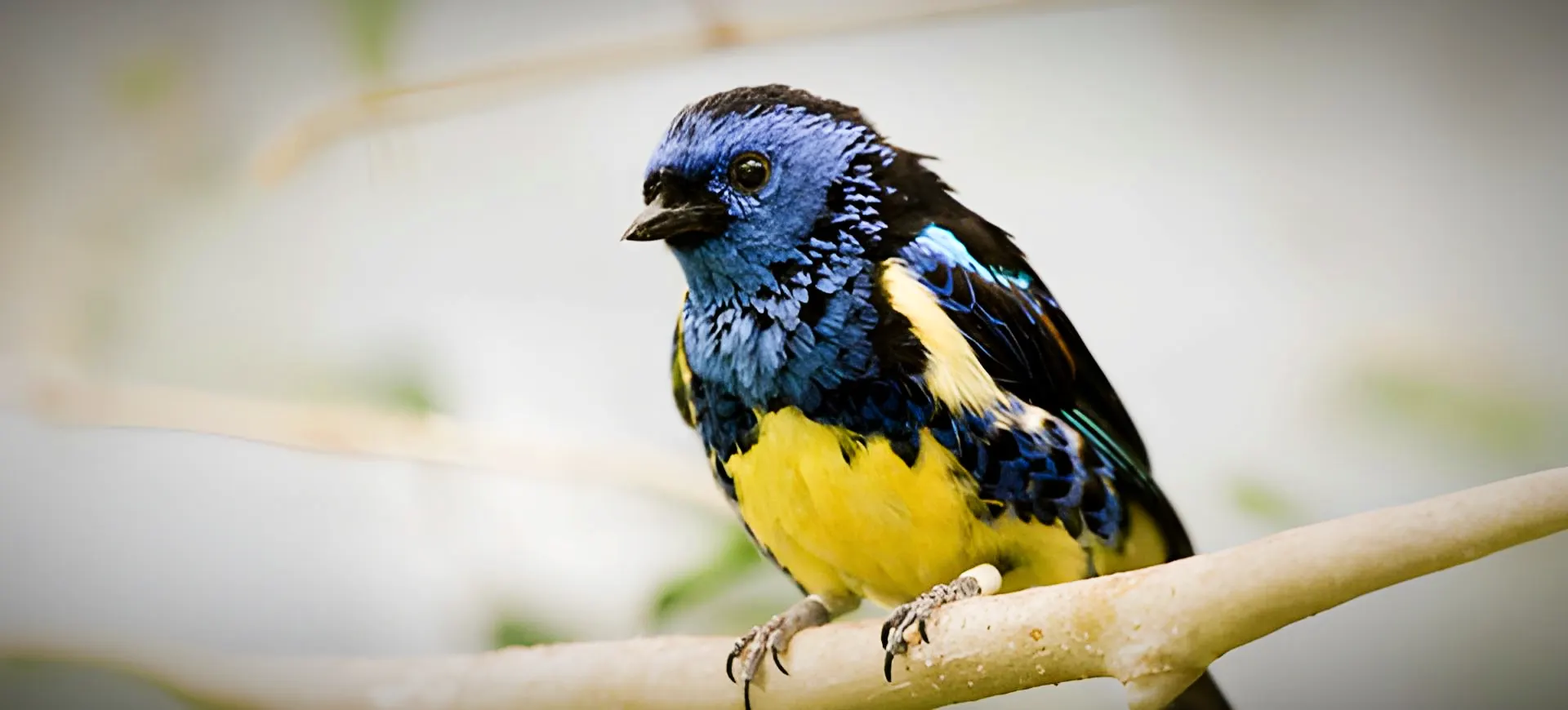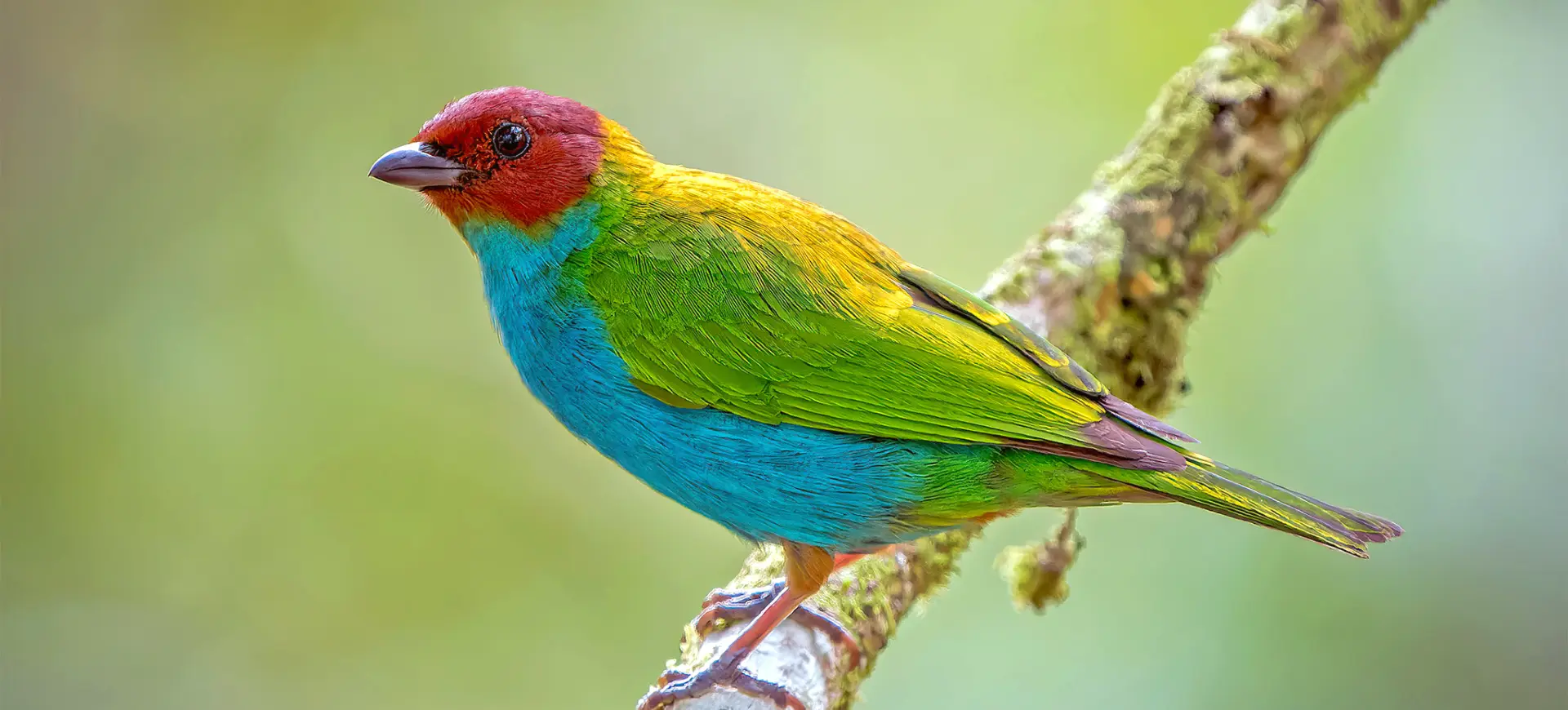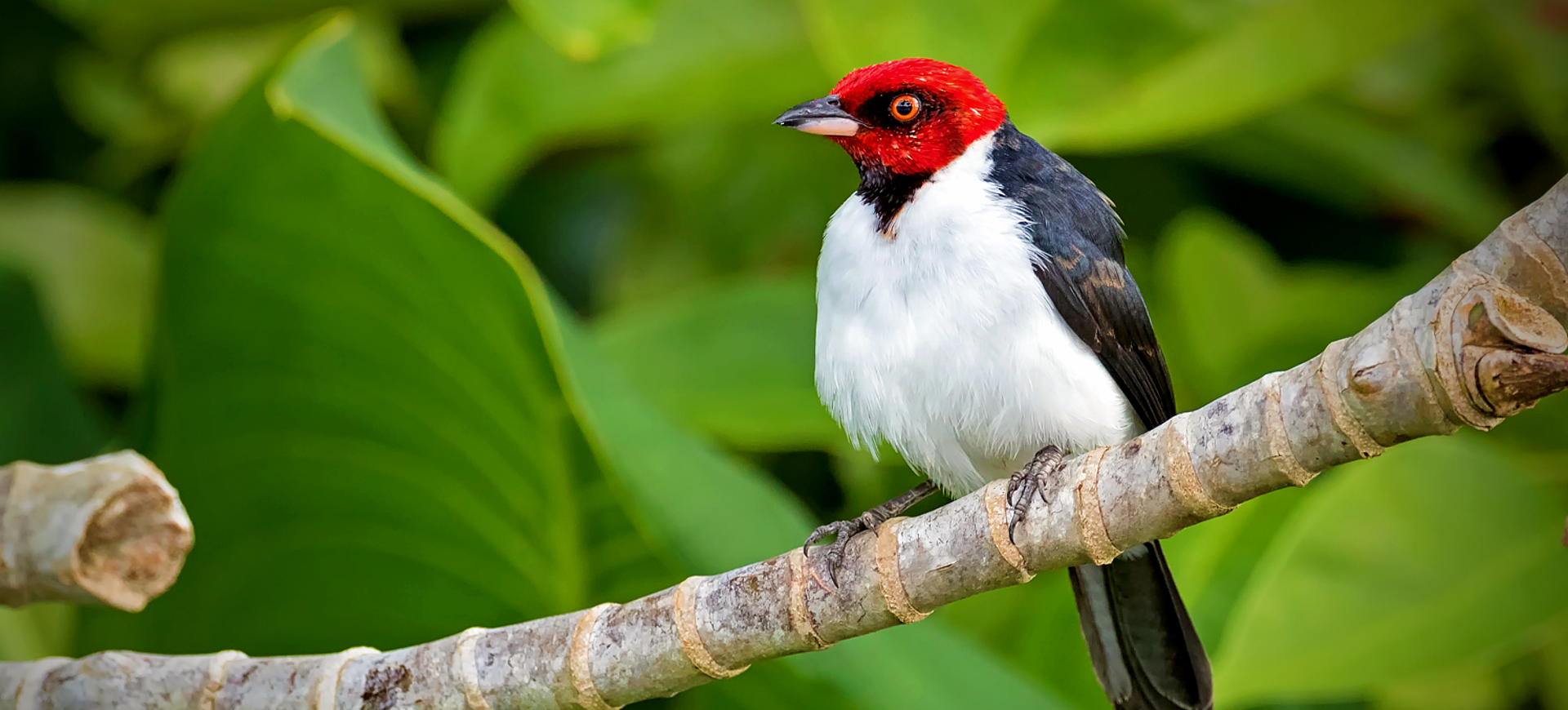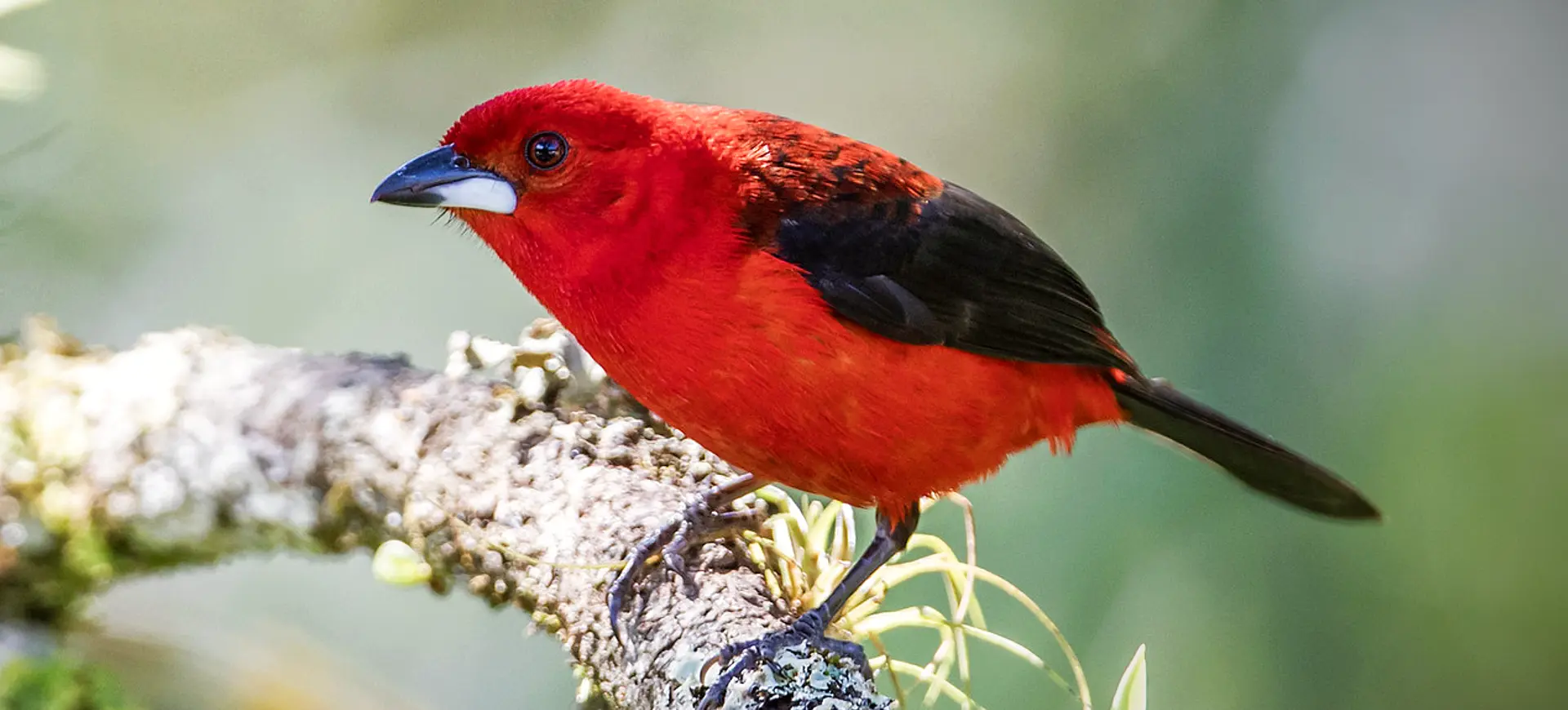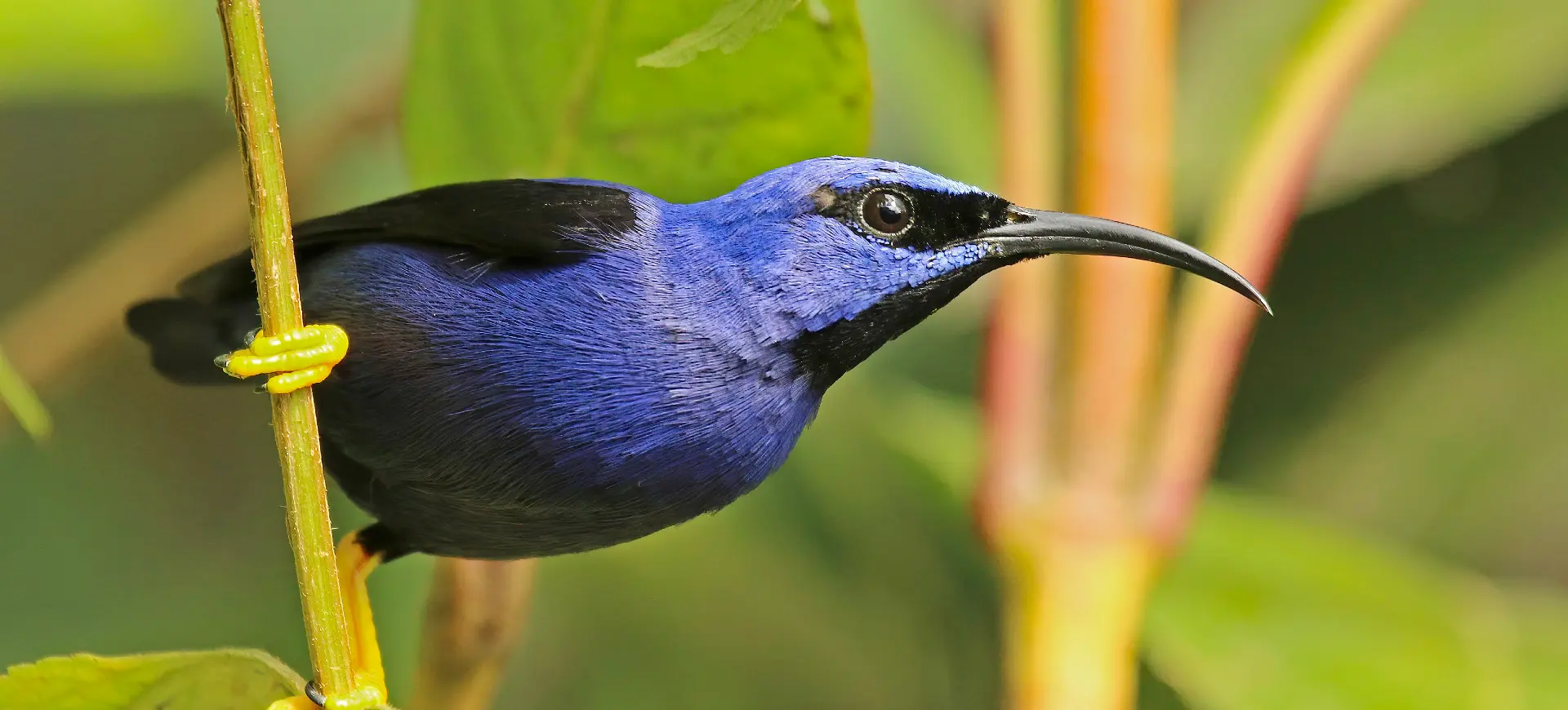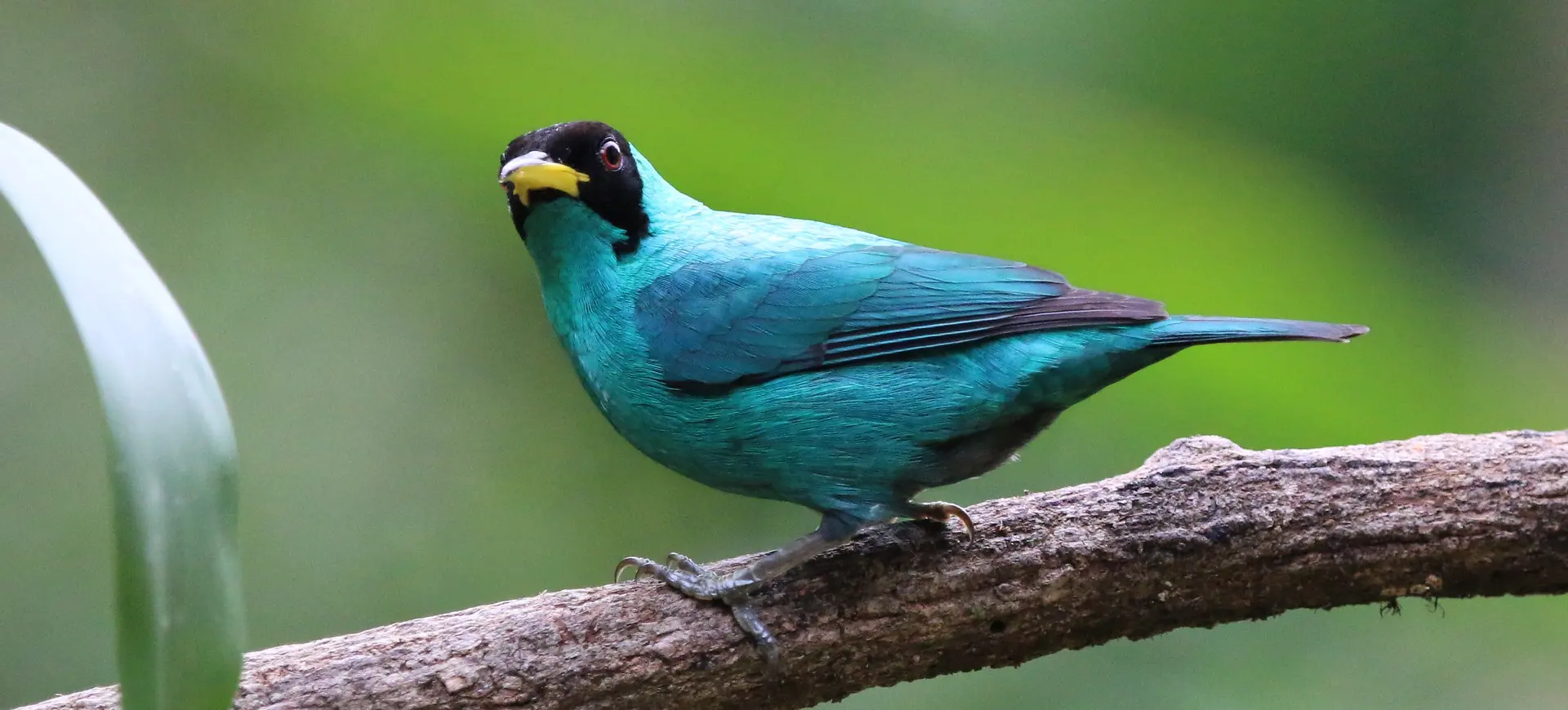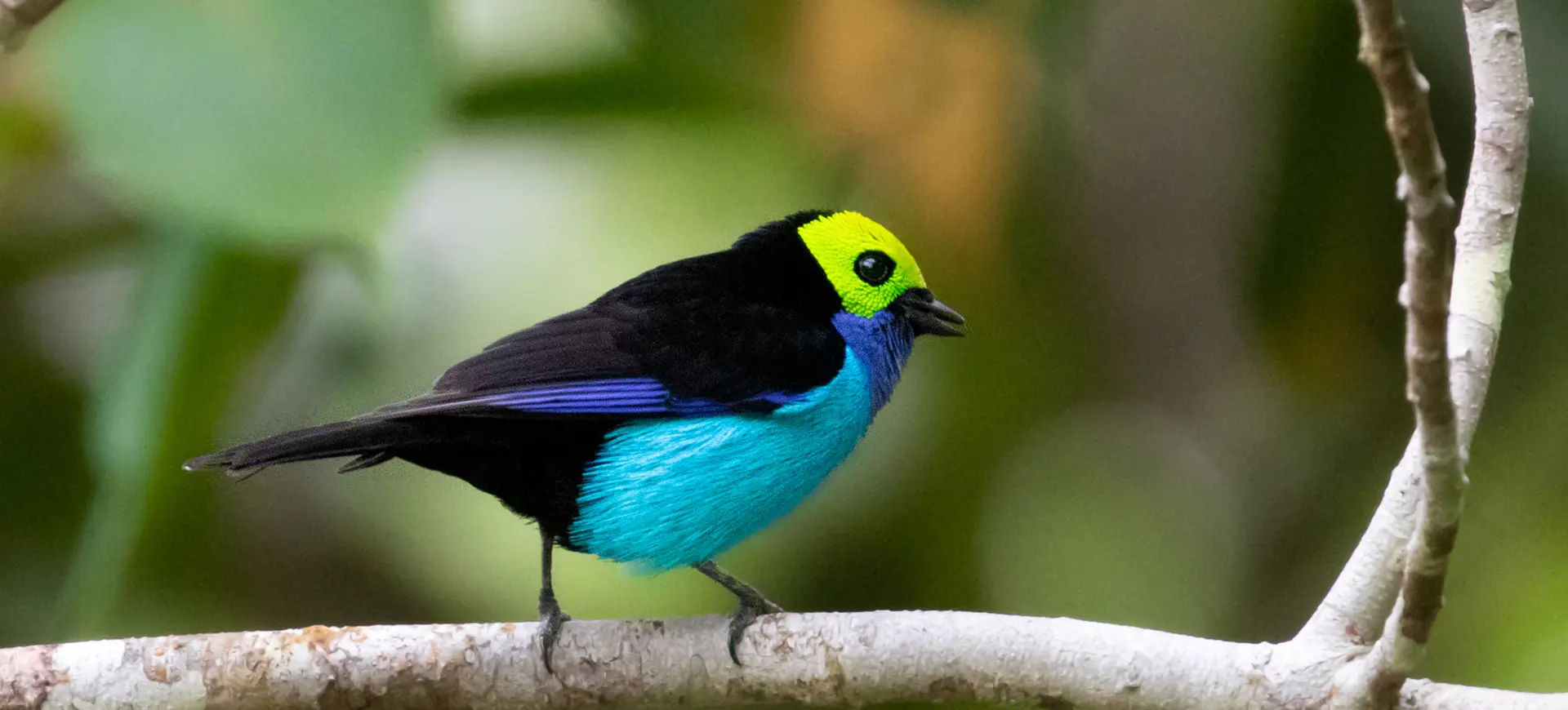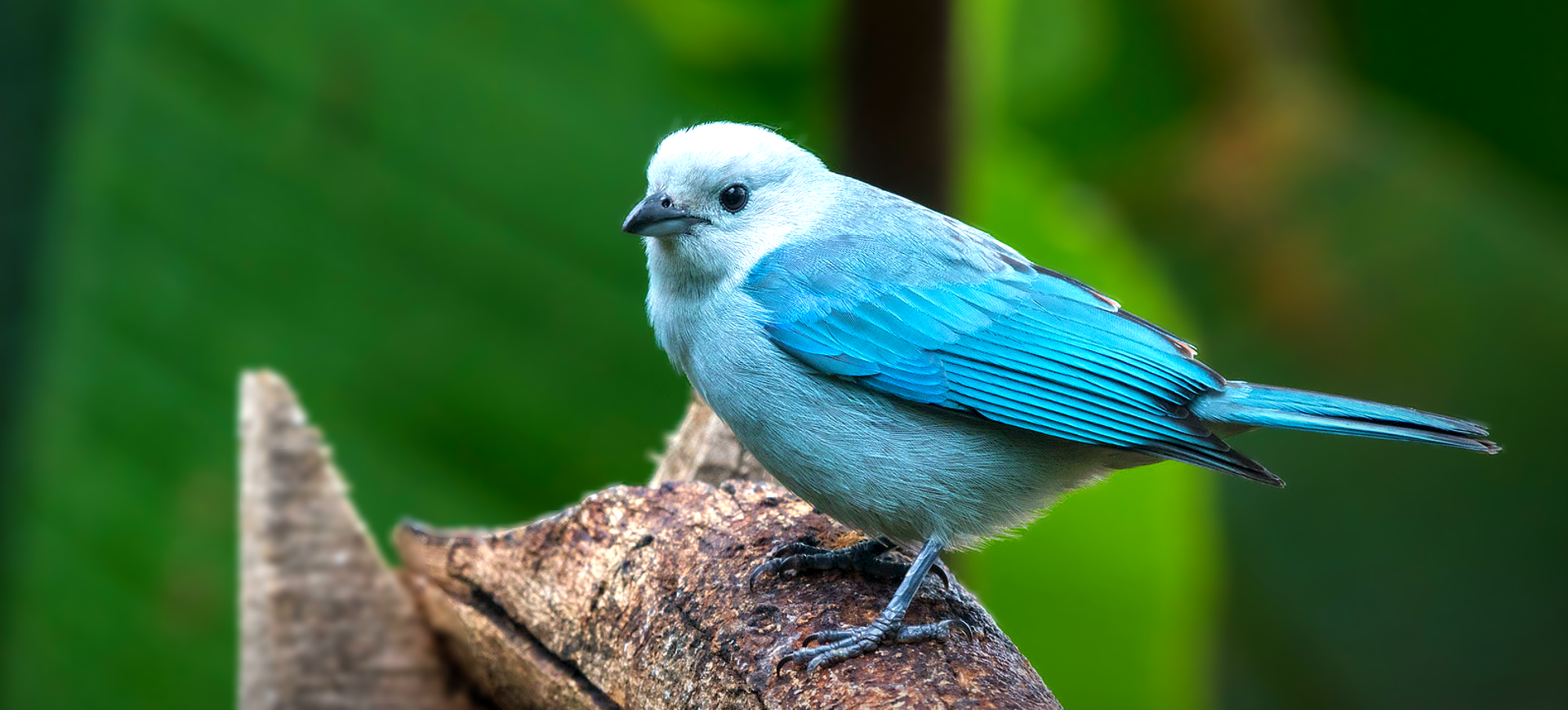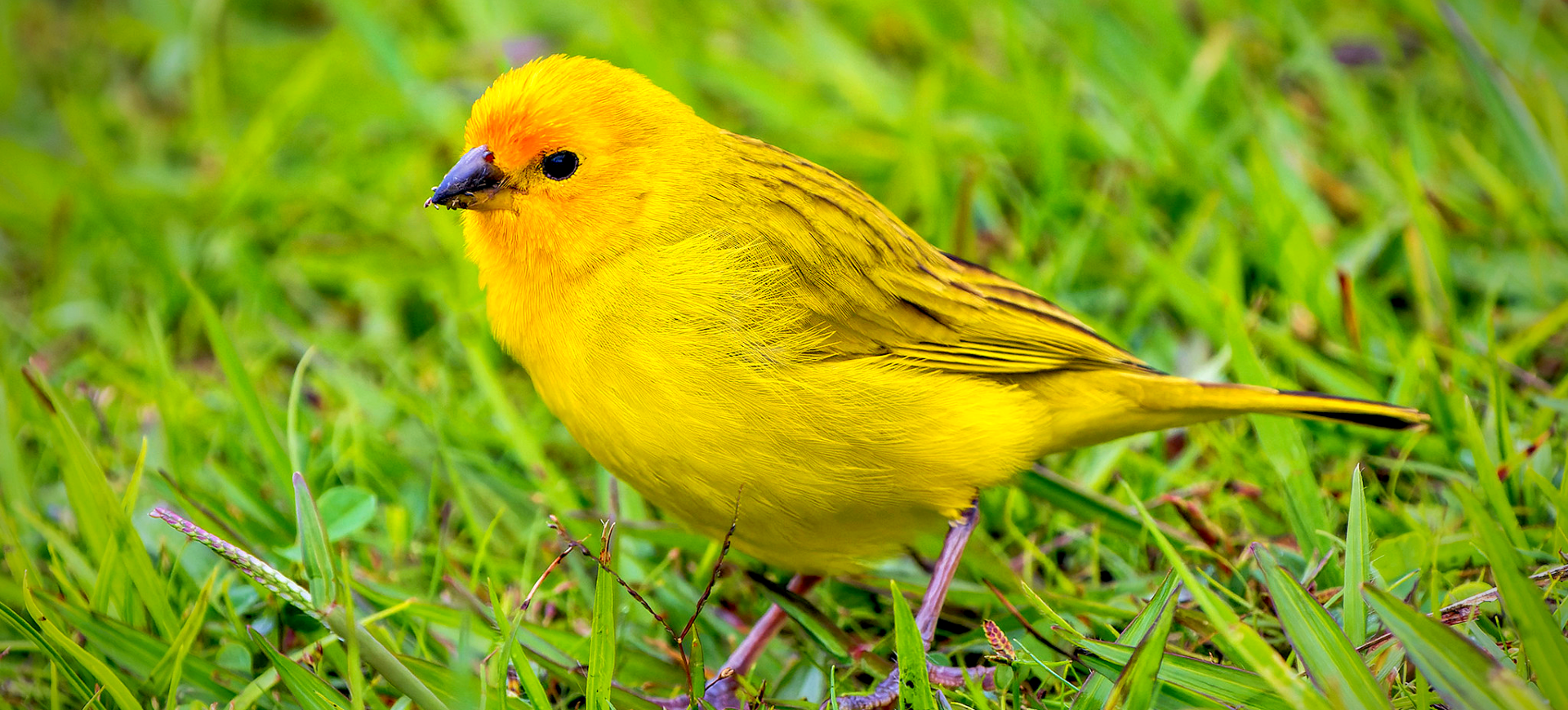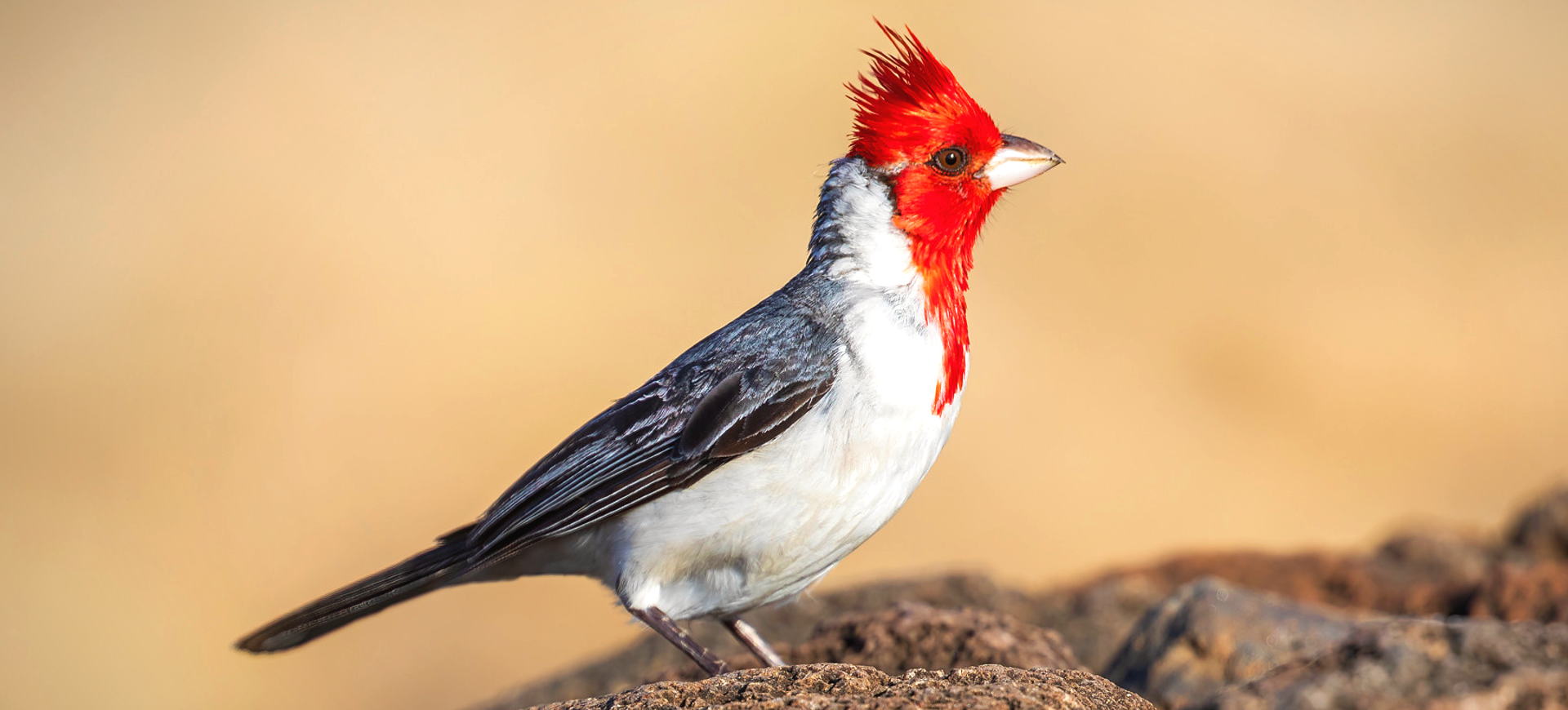Overview
The Bananaquit, Coereba flaveola, is a small, vibrant bird found throughout Central and South America and the Caribbean islands. This species is easily recognized by its striking coloration, featuring a glossy black head, a bright yellow underpart, and a greyish back with a distinctive white stripe above the eye. Measuring about 10 to 13 cm in length, Bananaquits are agile and energetic, often seen flitting among flowers and foliage in search of nectar, their primary food source. Their curved bill is specially adapted for nectar feeding, although they also consume fruits and insects, showcasing their opportunistic feeding habits.
Bananaquits are highly adaptable birds that thrive in many environments, from dense tropical forests to gardens and urban areas. Their preference for areas rich in flowering plants makes them common visitors to feeders, where they exhibit remarkable acrobatics to sip nectar. Despite their small size, they are territorial and often aggressive in defending their feeding areas from other nectarivores. Combined with their generalist diet, this tenacity allows Bananaquits to flourish in various habitats, contributing to their widespread distribution and abundance.
The Bananaquit’s conservation status is of the least concern, reflecting adaptability and success in colonizing a broad geographical range. However, its reliance on specific flowering plants for nectar underscores the importance of preserving natural habitats and biodiversity. As pollinators, Bananaquits play a crucial role in the reproductive cycles of many tropical plants, making them vital components of their ecosystems. Their presence across diverse environments highlights their ecological significance and the interconnectedness of species within tropical and subtropical ecosystems.
Taxonomy
Kingdom
Phylum
Class
Order
Family
Genus
Species
Type
Current distribution:
The Bananaquit is widely distributed across the tropical and subtropical Americas, from Mexico and the Caribbean to Brazil and Argentina. Despite this broad range, the species exhibits significant variation in plumage and size, leading to the recognition of numerous subspecies. This variation reflects the species' ability to adapt to diverse ecological niches, resulting in localized forms that are fine-tuned to specific environments.
Conservation efforts for the Bananaquit focus on protecting natural habitats and promoting biodiversity, ensuring the availability of key resources such as flowering plants. While the species is currently not considered at risk, habitat destruction and climate change pose potential threats to some populations. Efforts to monitor and preserve their habitats are essential for the continued health and diversity of Bananaquit populations across their range.
Physical Description:
The Bananaquit’s physical appearance is marked by a combination of colors that make it stand out in its natural habitat. Its glossy black head and bright yellow underparts starkly contrast the green foliage it frequents, while the greyish back and wings blend with the shadows of the forest canopy. The white eye stripe adds to its distinctive look and serves as a visual cue to conspecifics and potential predators. The bird’s slender, curved bill is perfectly shaped for accessing nectar from flowers, demonstrating an evolutionary adaptation to its diet.
Despite their diminutive size, Bananaquits are robust and active, capable of quick, darting movements that enable them to easily navigate through dense vegetation. Their agility is a key factor in their feeding strategy, allowing them to hang upside down or hover briefly to extract nectar from flowers. This combination of physical attributes and behaviors not only aids in their survival but also in their role as pollinators, facilitating the transfer of pollen between flowers as they feed.

Lifespan: Wild: ~6 Years || Captivity: ~10 Years

Weight: Male & Female: 0.18-0.24 oz (5-7 g)

Length: Male & Female: 4-5 in (10-13 cm)

Wingspan: Male & Female: 6-7 in (15-18 cm)

Top Speed: 15 mph (24 km/h)
Characteristic:
Native Habitat:
Bananaquits are native to a broad swath of tropical and subtropical regions, ranging from the Caribbean islands to South and Central America. They strongly prefer habitats that offer abundant flowering plants, including tropical forests, gardens, and scrublands. Their adaptability to different environmental conditions is remarkable, allowing them to inhabit areas from sea level to mountainous regions up to 2000 meters in elevation.
The versatility of the Bananaquit in utilizing various habitats has enabled it to maintain stable populations across its range. Their presence in urban and suburban areas, where they often visit bird feeders for sugar water, is a testament to their adaptability. Preserving natural habitats, particularly those rich in biodiversity and flowering plants is crucial for sustaining Bananaquit populations and the ecological services they provide.
Climate Zones:
Biomes:
Biogeographical Realms:
Continents:
Countries:
Diet:
Diet & Feeding Habits:
Primarily nectarivorous, the Bananaquit’s diet revolves around the nectar from various flowering plants. This specialization is facilitated by their curved bill and brush-tipped tongue, designed for efficient nectar extraction. However, their diet is not limited to nectar; they consume fruits and small insects, making them omnivorous. This dietary flexibility allows them to exploit different food sources throughout the year, adapting to seasonal changes in plant flowering patterns.
Bananaquits are known for their persistent and ingenious feeding feeding methods. They often pierce the base of flowers to access nectar, bypassing traditional pollination processes. Despite this, they still play a role in pollination, as they occasionally feed in a manner that facilitates pollen transfer. Their feeding behavior exemplifies the complex interactions between species and their environments, highlighting the importance of diverse and abundant flowering plants for maintaining healthy ecosystems.
Mating Behavior:
Mating Description:
Bananaquits exhibit a polygynous mating system, where males may mate with multiple females during the breeding season. Males do not have a specific territory but rather defend their feeding territories aggressively to attract females. The courtship process involves males displaying their vibrant plumage and vocalizing to woo potential mates—once a pair is formed, the focus shifts to nesting and raising offspring.
Females carefully choose nesting sites and construct the nest using various materials such as grasses, feathers, and spider webs. The nest is often placed in dense vegetation or man-made structures, protecting it from predators. Females lay 2-3 eggs per clutch, which they incubate alone. The chicks are altricial, requiring several weeks of care before fledging. This breeding strategy underscores the importance of resource availability and habitat quality for successful reproduction.
Reproduction Season:
Birth Type:
Pregnancy Duration:
Female Name:
Male Name:
Baby Name:
Social Structure Description:
Bananaquits are known for their social behavior. They often form loose associations with other individuals, especially in areas with abundant food resources. While generally not territorial, they can defend prime feeding spots aggressively against other nectar-feeding birds. Their interaction with other species and conspecifics at feeding sites demonstrates a complex social dynamic where competition and cooperation coexist.
During the breeding season, the social structure becomes more pronounced, with males displaying to attract females and defend their feeding territories. The communal aspect of Bananaquit life, including their foraging and nesting behavior, highlights the importance of social interactions in their survival and reproductive success. Understanding their social structure is crucial for conservation efforts, as it influences habitat management and the design of conservation programs to support healthy populations.
Groups:
Conservation Status:
Population Trend:
Bananaquit populations are generally stable throughout their wide range, thanks to their adaptability and generalist nature. They are commonly found in suitable habitats across the Americas and the Caribbean, indicating healthy populations where environmental conditions support their diet and breeding requirements. Their ability to thrive in natural and human-altered landscapes has helped them maintain robust numbers despite habitat change and degradation challenges.
Conservation efforts for Bananaquits are centered on habitat preservation, particularly in regions where deforestation and urbanization threaten natural ecosystems. Promoting the growth of native flowering plants and protecting natural habitats are key strategies for sustaining Bananaquit populations. While the species is not currently under significant threat, ongoing monitoring and habitat management are crucial for ensuring their continued success.
Population Threats:
Habitat loss and fragmentation are the primary threats to Bananaquit populations, particularly in areas undergoing rapid urbanization or agricultural expansion. The removal of flowering plants and trees can directly impact their food sources, affecting their ability to feed and reproduce. Additionally, the use of pesticides in agriculture poses a risk by reducing insect populations, which are an important part of their diet.
Climate change also presents a potential threat, as shifts in weather patterns can alter plants’ flowering times, potentially disrupting nectar availability. Conservation measures that address these threats include habitat restoration, the establishment of protected areas, and sustainable land management practices. Efforts to maintain the ecological integrity of their habitats are essential for the preservation of Bananaquit populations and the broader biodiversity of their ecosystems.
Conservation Efforts:
Conservation efforts for the Bananaquit focus on protecting and restoring natural habitats, ensuring the availability of flowering plants for nectar feeding. Initiatives that promote the planting of native species in gardens and urban areas can also support Bananaquit populations, providing additional food sources and nesting sites. Collaboration between conservation organizations, governments, and local communities is key to implementing effective conservation strategies that balance ecological needs with human interests.
Awareness campaigns and education programs can play a role in conservation by highlighting the importance of Bananaquits and their role as pollinators. Engaging communities in conservation and habitat restoration projects fosters a sense of stewardship and contributes to the long-term success of conservation efforts. They are protecting the Bananaquit and its habitat, benefiting this species, and preserving the rich biodiversity of the tropical and subtropical Americas.
Additional Resources:
Fun Facts
- Bananaquits can adjust their diet based on availability, demonstrating remarkable dietary flexibility.
- Their ability to hover briefly while feeding is reminiscent of hummingbird behavior, though they are unrelated.
- Bananaquits are known to visit sugar water feeders, where they exhibit ingenious methods to access the sweet liquid.
- They can be found at various elevations, from sea level to high mountainous regions.
- The species exhibits significant plumage variation, leading to a rich subspecies diversity.
- Bananaquits are bold and resourceful despite their small size, often competing with larger birds for food.
- They are capable of rapid, directional changes in flight, showcasing their agility and maneuverability.
- The Bananaquit’s role as a pollinator is vital for reproducing many tropical and subtropical plants.
- They often build their nests in unusual places, including hanging plants and man-made structures.
- Bananaquits are one of the few bird species that can digest sugar directly, allowing them to thrive on a nectar-rich diet.

